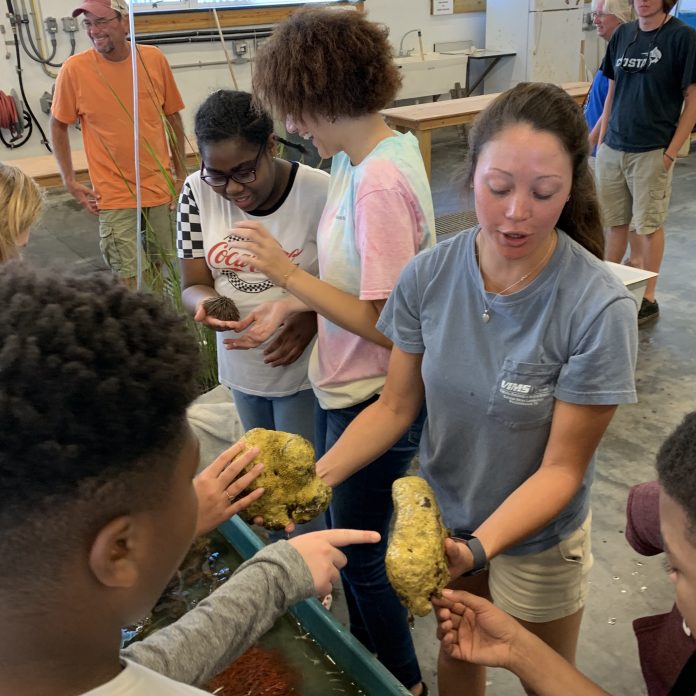Story and Photos by Connie Morrison
Nandua Middle School seventh-grade science students had a touchy-feely experience at VIMS this week when they toured the saltwater lab in Wachapreague.
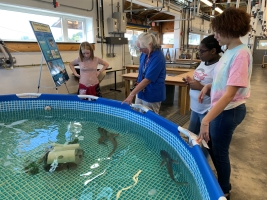
The objective, said science teachers Nancy Biegel and Sarah Prior, was to introduce students to VIMS and the ecosystem of the Eastern Shore.
“I want them to get a sense of curiosity about what’s around them,” said Biegel, who had a 20-year career as an outdoor educator before becoming a teacher. “It gives them a chance to see what’s in their backyard.”
It was the second year VIMS has hosted the field trips, and by midweek, the entire Nandua seventh grade had toured the lab.

It’s all part of the VIMS mission, says Richard Snyder, director of the Eastern Shore laboratory. Besides introducing youth to STEM (science, technology, engineering, and mathematics) careers, the facility helps to “educate local children and adults about the Marine environment that is so much a part of the Eastern Shore, but so many never see,” he said in an email to the Post.
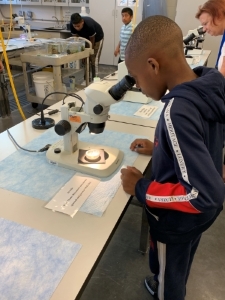
“I think it is very important to reach elementary and middle school students who are beginning to develop interests in different areas of study, waiting until high school or college may be too late!”
VIMS holds an annual open house for the public, so it is able to “capitalize on that effort by inviting groups to come by the lab during the week following,” Snyder wrote.
Ecology is the next science unit the seventh graders will study, said the teachers, and classroom lessons will be about organisms in different ecosystems, including the marine environment.
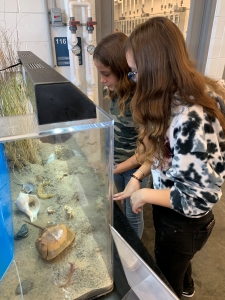
Student Kayleigh Maleski examined the ghost crab tank with Marielle Warren. She was enjoying the field trip because “there’s stuff you can touch.”
A microscope with a view of juvenile clams caught the interest of Isaiah Williams. The equipment is “a more powerful version of what’s in the classroom,” said Biegel. “The kids get to see things they’ve never seen before.”
Participants viewed selected sea life under the microscope, touched the animals in tanks, and watched a video that shows the same creatures’ movements and habits. The three-pronged approach helps students “to make all the connections,” Prior said.
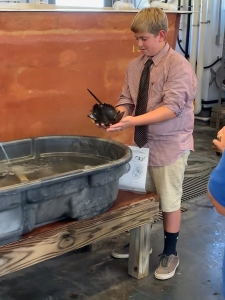
“We study biomes and ecosystems in the classroom,” said Prior. “We can say, ‘Remember when you saw this at the lab.’
“Students know about the (annual Wachapreague firemen’s) carnival, but don’t know there’s a living science laboratory” just down the road.
The same students will take another field trip in October, this time to the Nature Conservancy’s Brownsville Preserve, near Nassawadox.
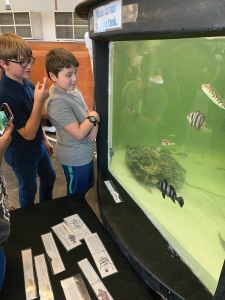
Their lessons will include oyster reef denizens and water quality, and they will paddle kayaks. The trip will be covered by a NOAA B-WET (Bay Watershed Education and Training) grant.

